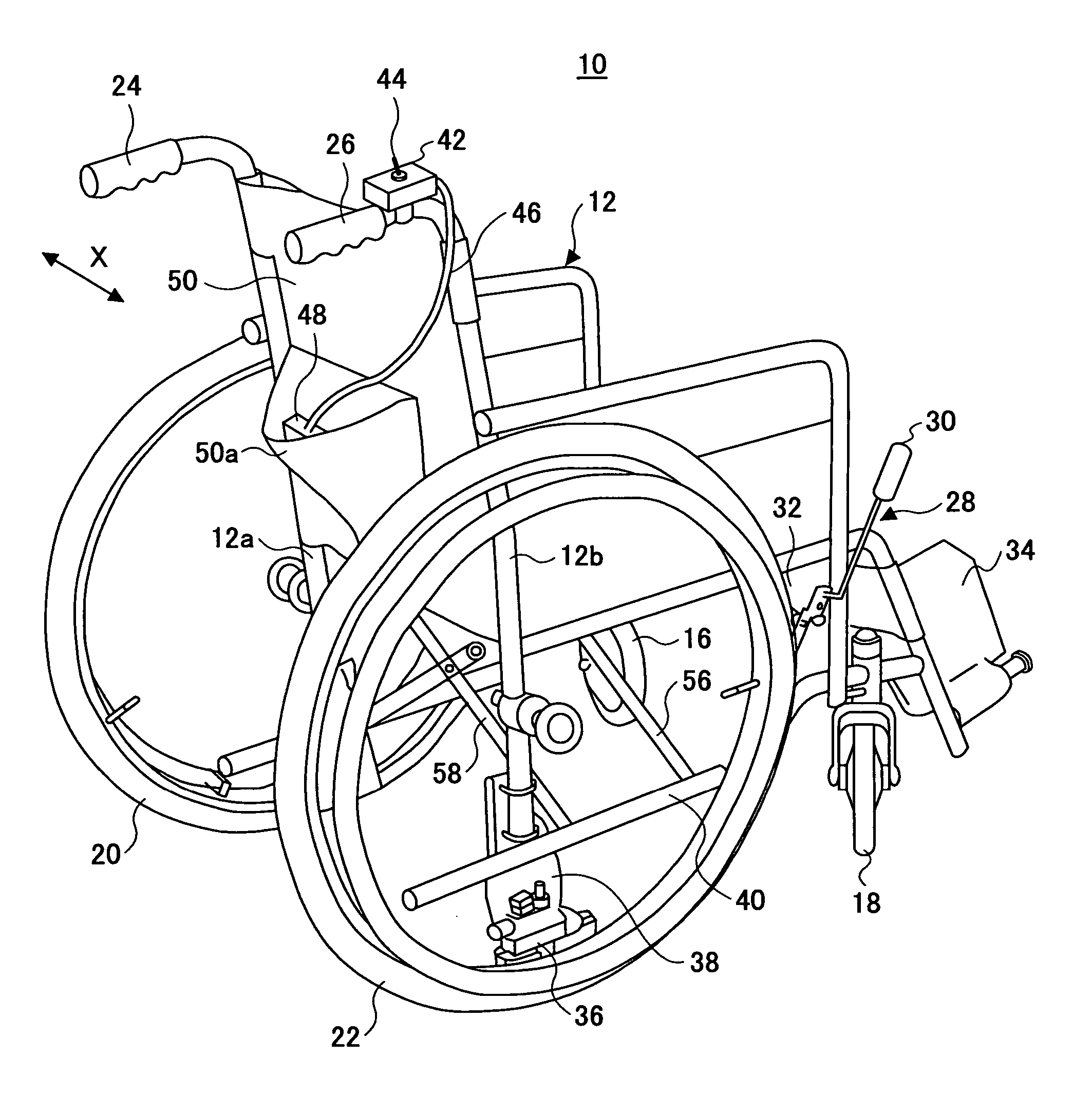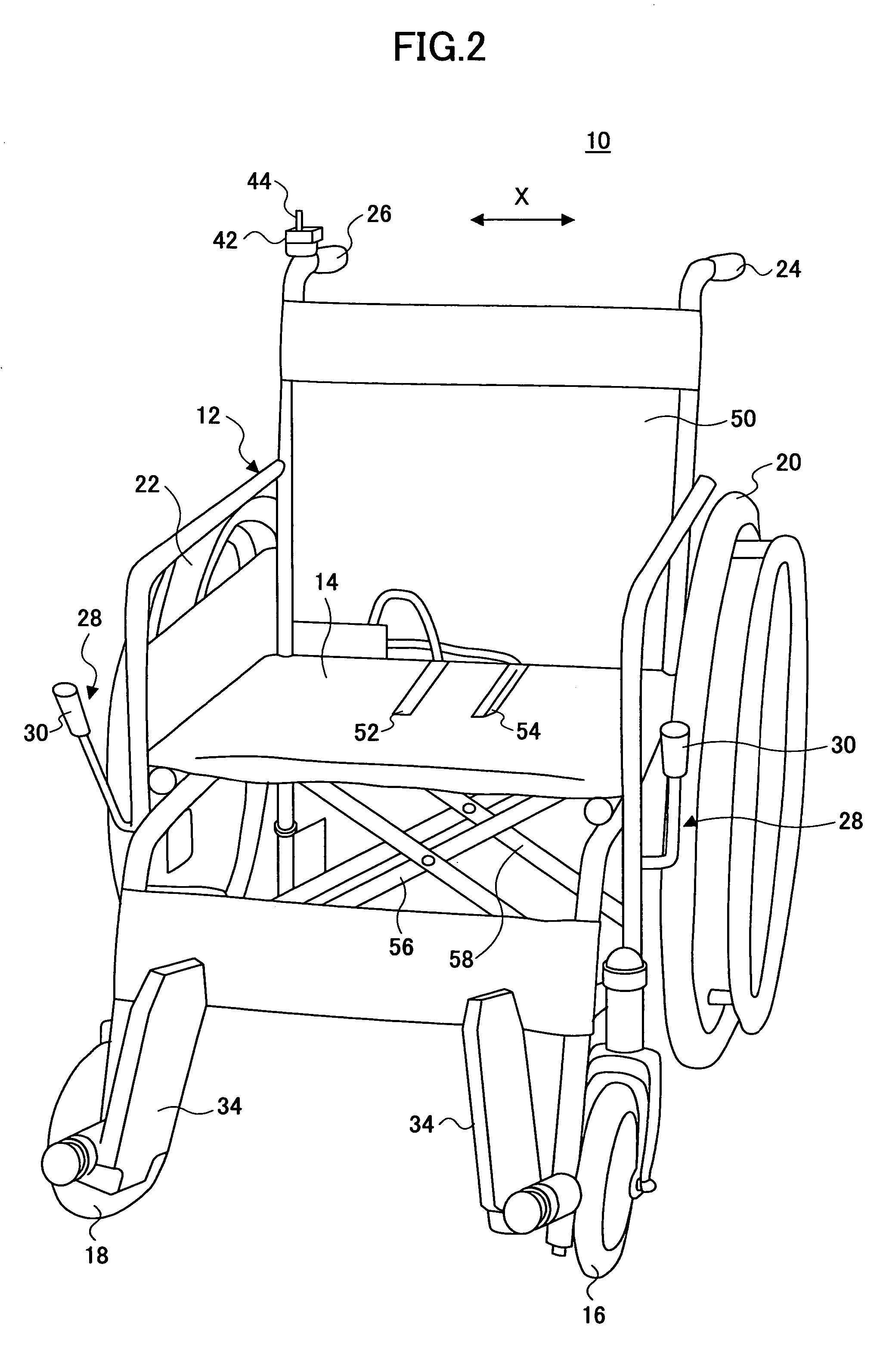Wheelchair, brake unit therefor, and brake unit for a manually-propelled vehicle
a technology for manually-propelled vehicles and brake units, which is applied in the direction of electric devices, braking systems, tractors, etc., can solve the problems of user discomfort, user loss of body balance, and wheelchair movement in unexpected directions, so as to prevent user from losing body balance and simple configuration
- Summary
- Abstract
- Description
- Claims
- Application Information
AI Technical Summary
Benefits of technology
Problems solved by technology
Method used
Image
Examples
first embodiment
[0037][First Embodiment]
[0038]FIGS. 1 and 2 are an angled rear perspective view and a front perspective view, respectively, of a manually-propelled vehicle 10 according to a first embodiment of the present invention.
[0039]As shown in FIGS. 1 and 2, the manually-propelled vehicle 10, which is a four-wheel manual wheelchair in the illustrated exemplary embodiment, includes a frame 12 composed of metal pipes and a cloth seat 14 provided across the frame 12. Further, the manually-propelled vehicle 10 (hereinafter referred to as “wheelchair 10”) includes small-diameter front wheels 16 and 18 on the front side of the frame 12 and large-diameter rear wheels 20 and 22 on the respective left and right sides of the rear part of the frame 12. The front wheels 16 and 18 are provided to rotate freely so as to face a direction in which the wheelchair 10 moves.
[0040]The wheelchair 10 includes push handles 24 and 26 so that a caregiver can push the wheelchair 10 from behind. Further, the wheelchair...
second embodiment
[0165][Second Embodiment]
[0166]FIGS. 10 through 16 are plan views of an electric brake unit 120 according to a second embodiment of the present invention, showing an operation process of the electric brake unit 120. FIG. 17 is a circuit diagram showing a control circuit 122 according to the second embodiment. FIGS. 10 through 16 show an exemplary left-side electric brake unit 120, for use in, for example, the wheelchair 10 shown in FIGS. 1 and 2. The wheelchair 10 also includes the same electric brake unit 120 on the right side.
[0167]An exemplary configuration of the second embodiment may be realized by replacing the electric brake units 36 and the control circuit 108 of the first embodiment with the electric brake units 120 and the control circuit 122. The same elements as those of the first embodiment are referred to by the same numerals, and a description thereof is omitted. The mechanical drive part of the electric brake unit 120 including the brake shoes 64a and 66a that are no...
PUM
 Login to View More
Login to View More Abstract
Description
Claims
Application Information
 Login to View More
Login to View More - R&D
- Intellectual Property
- Life Sciences
- Materials
- Tech Scout
- Unparalleled Data Quality
- Higher Quality Content
- 60% Fewer Hallucinations
Browse by: Latest US Patents, China's latest patents, Technical Efficacy Thesaurus, Application Domain, Technology Topic, Popular Technical Reports.
© 2025 PatSnap. All rights reserved.Legal|Privacy policy|Modern Slavery Act Transparency Statement|Sitemap|About US| Contact US: help@patsnap.com



